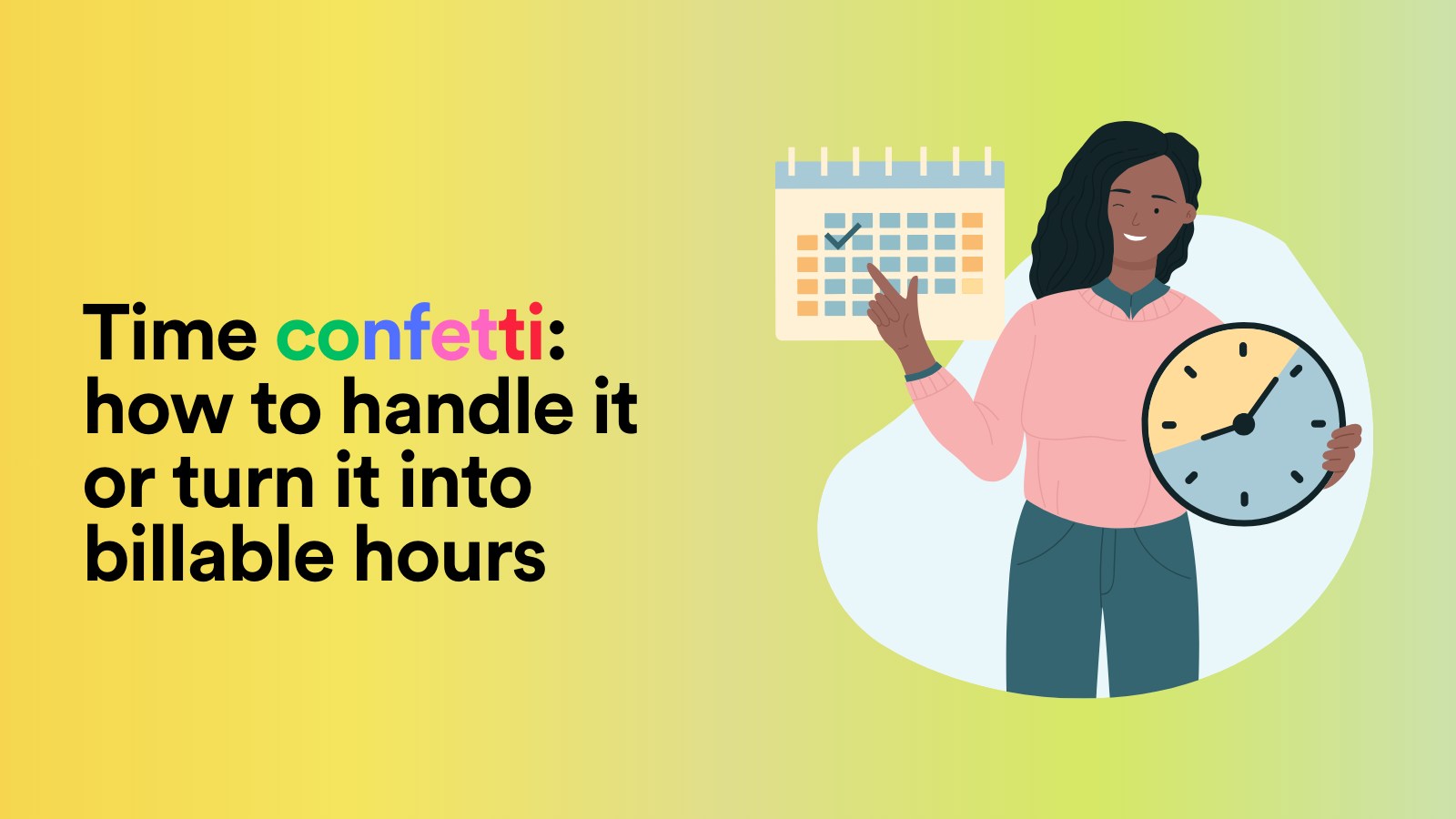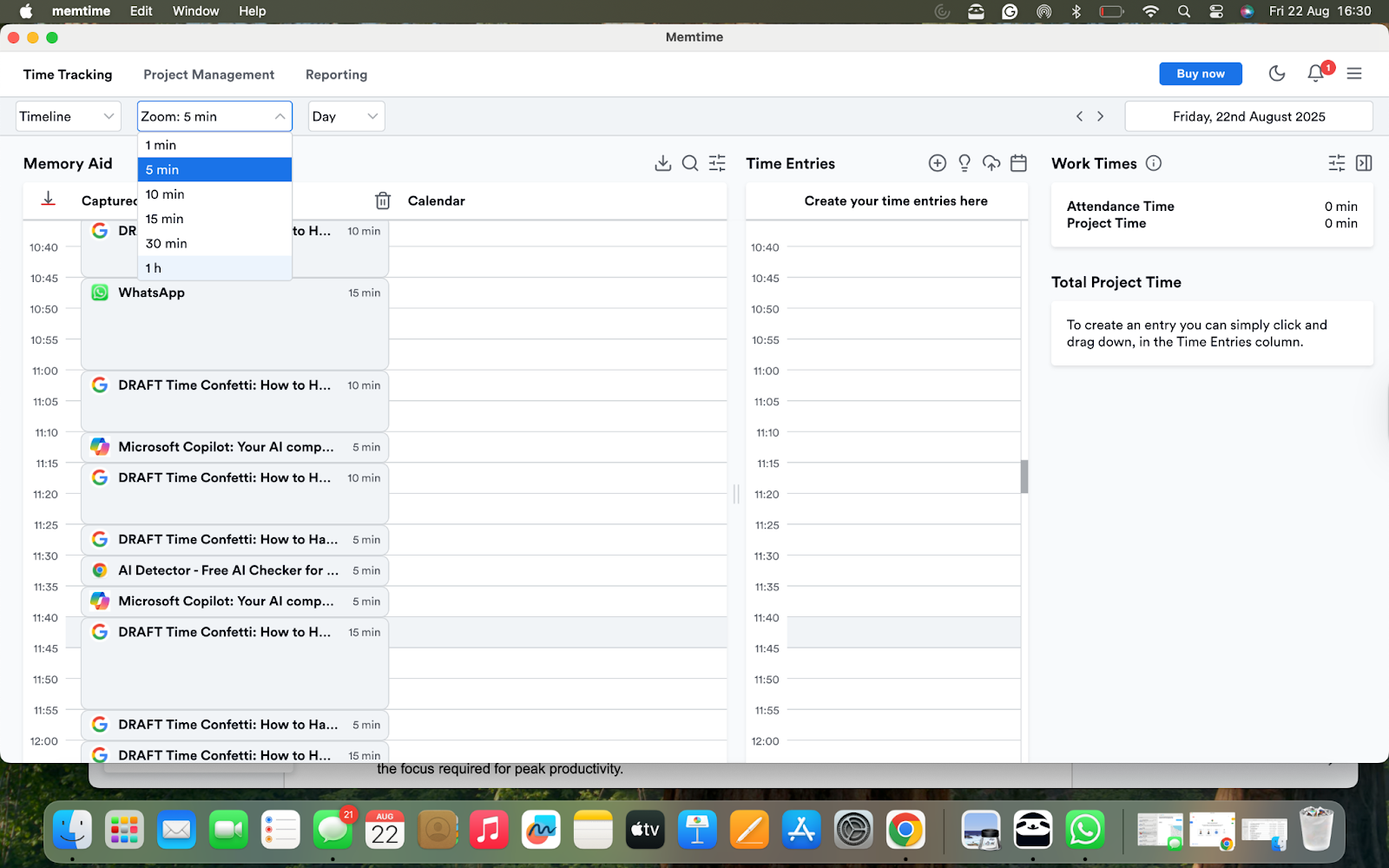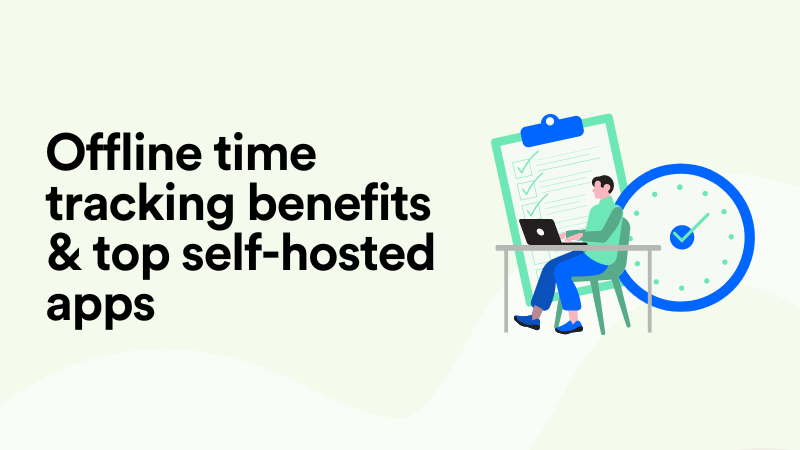Time Confetti: How to Handle It or Turn It Into Billable Hours

Doesn’t confetti sound like fun?! That’s because it usually is. So, is “time confetti” a celebration of time itself? Nope. Quite the opposite, in fact. Time confetti is a stealth disruptor – especially for freelancers and service-based professionals. In fast-paced, client-driven environments where overservicing is rife, time confetti can quietly sabotage your output and profitability.
As expected, confetti in this instance refers to scattered moments that may seem insignificant, but they accumulate quickly, eroding focus and making it difficult to track what you’ve actually accomplished. Think of it as countless missed opportunities to bill for real work!
So, join us as we explore time confetti, how it can present in your workflow, and why it shouldn’t be ignored. You’ll learn how to spot it, minimize its impact, and even turn it into something valuable. With practical strategies and real-life examples, we’ll help you see how you can reclaim those scattered minutes and bring structure back to your day.
Key takeaways
- Caused by constant interruptions, multitasking, and digital distractions, time confetti fragments your day into seemingly unusable scraps. Recognizing it is the first step toward reclaiming clarity and control.
- Productivity suffers when time is scattered (shocker). Managing your time isn’t enough to mitigate time confetti; you need to understand how you experience it personally. Designing your day around focus, transitions, and energy levels can restore momentum.
- Time confetti hides in everyday habits, be it “quick emails”, Slack pings, and tab-switching. These moments may feel minor, but they quietly derail your workflow and collectively drain hours of billable effort.
- Use routines, task modes, and focus blocks to reduce cognitive friction. Tracking transitions is just as important as tracking tasks.
- It's possible to turn time confetti into revenue. You can do this by bundling microtasks, setting billing thresholds, and reviewing your timeline daily. Passive tracking tools help you capture and convert scattered minutes into billable hours.

What is time confetti?
Grant yourself a minute to think about your working day. How many times throughout does your attention get hijacked by seemingly inconsequential things – a ping, a ding, a playlist, an email, a post… How often does that happen? How can you even keep track of all these daily diversions that snowball silently? This is time confetti.
Consider “time confetti” the visual representation of having your day shredded into countless teeny pieces – moments so fleeting they seem impossible to quantify. These slivers often come from the trifecta of time sucks, those being digital distractions, multitasking, and incessant interruptions. As expected, it can leave you feeling rushed off your feet yet largely unproductive.
As for the term itself? Brigid Schulte is believed to have coined it. Exploring the concept in her book Overwhelmed: Work, Love, and Play When No One Has the Time, she argues that our culture celebrates “busyness” while eroding our ability to experience deep focus or the benefits of leisure or downtime.
Time confetti doesn’t fritter away a few minutes – it undermines your sense of control and clarity. Instead of cohesive blocks of time, you’re left with a fluttering mess that’s hard to stitch into anything substantial. Recognizing this pattern is key to reclaiming attention and designing a more intentional rhythm to work and life.
Time confetti and productivity
If you’re thinking "Well, this time confetti doesn’t sound super productive!” you’d be right. You see, time is often viewed as measurable, divisible, and infinitely optimizable – much like a spreadsheet. However, not all of our minds function in orderly rows and columns. We need to change from simply managing time to comprehending how we experience it if we are to get the focus required for peak productivity.
Below you’ll find some techniques that should encourage you to interact with time in a more intuitive way.
Restart your relationship with time…
- Create transition-friendly designs: Include some deliberate "buffer rituals" in between tasks, such as a 2-minute reset to refocus your attention, rather than battling interruptions as they arise.
- Examine your focus rather than your schedule: Throughout the day, keep track of the things that preoccupy your mental energy. Your biggest time leaks frequently occur of their own accord – they aren't planned.
- Park it: Make a running list of any distracting ideas or tasks that arise while you're trying to concentrate. You can acknowledge them while keeping your mind in a state of flow by offloading them onto a page or into voicenotes.
- Use ambient cues: You can occasionally indicate different modes (deep work vs. admin) by altering the lighting, background noise, or even scents (my go-to motivational smell is a bracing double espresso). The idea is that your surroundings can teach your brain to change gears more readily.
- Accept asymmetry: Not every hour is created equal. Determine your "cognitive prime time" and guard it as if it were sacred to you.
Not only is time your most valuable resource, but it's also a tool for reflection, creativity, and mindfulness. When you start to carefully hone it, you'll discover that productivity is less about doing more and more about doing what needs to be done quickly!

Real-life time confetti examples
Subtle, commonplace moments are where time confetti lurks. As I mentioned at the start, these seemingly incidental moments feel insignificant in terms of time and are therefore innocuous, but taken as a whole, they deplete your momentum and focus. Even though these pieces are frequently overlooked, they have a significant impact on how your day unfolds.
As such, they can appear in your daily life in the following ways:
- Switching between client deliverables while responding to "one quick email."
- Checking a Slack ping only to forget what you were working on pre-ping.
- Hopping on "one quick call" that turns out to be entirely protracted and shreds your schedule.
- You open a tab in your browser to do research, and you start reading (largely) irrelevant articles. The same goes for a push notification that prompts you to check news or apps.
- Updating a to-do list rather than finishing the next task.
- Responding to another calendar invite when you’re meant to be mentally prepping for a meeting.
- Spending "just one minute" on social media between tasks, then barrelling down a rabbit hole and losing all sense of time.
- Deciding to switch music playlists while working, only to get sidetracked by ALL THE OPTIONS.
How to deal with time confetti
Time confetti isn’t just about distractions – it’s about the resulting fragmentation. You must minimize cognitive friction and establish continuity throughout your day in order to effectively manage it.
- Establishing set routines to ground your day. Employ regular routines at the beginning and end of your workday. This will help to reduce drift and signal mental boundaries.
- Make use of "focus containers." Even if your schedule is erratic, set aside brief, secure windows of time (such as 45 minutes) for uninterrupted work.
- Label your tasks in advance. In order to group tasks based on mental load rather than just urgency, assign each one a mode, such as “creative”, “administrative”, or “client-facing”.
- Mitigate decision fatigue. To save energy on what to do next, plan out your day the evening prior.
- Keep track of transitions as well as tasks. By that, I mean keep track of how frequently you’re changing gears. More momentum can be restored by cutting down on transitions than by adding hours.
- Leave the remembering to Memtime. Memtime can help you reassemble your day without requiring manual input. How? By passively tracking your digital activities while you’re getting stuff done. Given you can “zoom in” to how you’re spending your time – be it minutely or hourly – Memtime transforms disparate moments into a coherent timeline. This allows you to identify trends, recover time that’s been lost, and make more informed decisions.

In short, time confetti thrives in chaos. Bringing structure to it – even in small doses – will start to bring order to your day!
Turning time confetti into billable hours
Time confetti becomes billable when you stop treating it as a perpetual background hum you need to put up with and start treating it as data. You need a system that captures and categorizes.
So, here are eight steps that can help you convert scattered minutes into meaningful revenue.
- Start by reframing what constitutes work. Billable time includes preparation, follow-up, communication, and context-switching in addition to in-depth client sessions. The first step to reclaiming your effort is realizing its full extent.
- Next, automate your time capture. Manual tracking can be counterproductive because it can act as a bottleneck in and of itself. Programs like Memtime run in the background, recording your activities and capturing your activity across various browsers and apps. By creating a digital breadcrumb trail through passive tracking, you can reconstruct your day without having to make any educated guesses. This will give you the visibility you need to begin billing.
- Establish billing buckets. You can do this by classifying recurrent microtasks, such as "client communication," "project preparation," or "research." This aids in arranging disjointed work into distinct, invoice-ready blocks that accurately represent the type of work you do.
- To reach your billing threshold, consider bundling: Assign related tasks until they reach the minimum billable unit, such as 10 or 15 minutes. This guarantees that worthwhile but modest efforts are not overlooked.
- Review and tag regularly: Go through your timeline at the end of each day and mark anything that has to do with specific clients. This practice raises awareness about time consumption and makes sure nothing is overlooked.
- Every week, conduct an audit. This way, you can compare your tracked time with your invoiced time. Examine your billing strategy for trends, such as clients who produce a lot of microtasks or projects that consume your administrative time.
- Communicate clearly with clients. Use labels that accurately reflect the value of your work when creating invoices. "Email correspondence + document review for client X" sounds more substantial than merely labelling "15 minutes on client X."
- Use data to advocate: If a client’s work consistently generates unbilled time, use your tracking insights to renegotiate scope creep or suggest a retainer model.
Billable hours aren’t just found in big blocks – they’re built from small, intentional captures. The goal isn’t to work more hours, but to claim time already spent!
If you’d like to kickstart your billing process so you can account for all the time confetti you’ve been otherwise throwing to the wind, and undercharging clients in the process, do consider trying our 14-day free trial. You don’t even need a credit card to give it a whirl.
What distinguishes time confetti from a distraction?
Time confetti is the result of numerous minor disruptions that tear your day into useless pieces. A distraction, meanwhile, is a discrete single interruption that careens you off course.
What impact does time confetti have on your feelings of achievement?
Time confetti can make you feel as though you haven't accomplished anything significant, even if you've been busy all day. Your focus becomes fragmented when you are constantly switching between tasks. This makes it more difficult to finish anything thoroughly or satisfactorily.
Why is time confetti not resolved by conventional time management?
The majority of time management programs concentrate on scheduling rather than attentional shifts. Because time confetti involves mental fragmentation, a more intuitive, experience-based method is needed.
Is it possible to get rid of time confetti entirely?
Not totally. Micro-distractions are unavoidable, even with strict boundaries. The objective is to lessen their influence and regain control over your time management and how you bill for it.
Sheena McGinley
Sheena McGinley is a columnist and features writer for the Irish press since 2008. She’s also a business owner that is conscious of how time tracking can foster progress. She wrote for SaaS companies and businesses that specialize in revenue optimization by implementing processes. She has the unique ability to digest complex topics and make them easy to understand. She shares this precious skill with Memtime readers. When she's not making words work for people, Sheena can be found taking (very) brisk dips in the Irish Sea.






